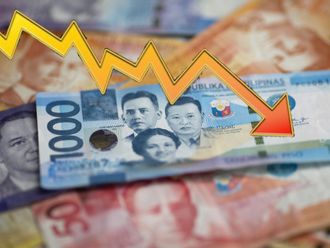Washington: Debts owed by borrowers to surplus countries have kept growing in the wake of the 2008-09 crisis and still threaten the global economy, the International Monetary Fund has warned.
Even though total current account deficits have halved since 2006 - with the big US trade deficit narrowing in particular - they have not turned into surpluses for large borrower countries. The total debt pile has therefore continued to increase.
The IMF’s warning in the analytical chapters of its latest World Economic Outlook shows that while the pattern of so-called “global imbalances” has changed, they remain a menace to economic stability.
“Stock imbalances have not decreased - on the con-trary, they have widened - mainly because of continued flow imbalances, coupled with low growth in several advanced economies,” says the IMF.
“Some large debtor economies thus remain vulnerable to changes in market sentiment, highlighting continued possible systemic risks.”
According to the IMF’s estimates, the net foreign liabilities of the US increased from 14 per cent of annual output in 2006 to 34 per cent in 2013. For Spain, they went up from 70 per cent of annual output to 103 per cent, while in Italy the increase was from 24 per cent to 36 per cent of output.
That was offset by large increases in net foreign assets for Japan, up from 41 per cent to 62 per cent of gross domestic product, and Germany where the rise was from 27 per cent to 46 per cent of GDP.
Countries with large foreign liabilities are vulnerable to financial market shocks which may make it harder to roll over their debts. However, the IMF said there is little chance of trouble for the US, with the dollar more dominant than ever in international finance.
The tabular content relating to this article is not available to view. Apologies in advance for the inconvenience caused.
“The status of the US dollar as a reserve currency seems, if anything, more secure now than in 2006,” the IMF wrote.
Total debts continued to rise even though annual deficits are smaller, and the pattern that defined the early 2000s - a large deficit in the US and a large surplus in China - has changed. “With the shrinkage in large deficits, the systemic risks from flow imbalances surely decreased,” says the IMF.
The US deficit has shrunk by more than half since 2006, from 5.8 per cent of output to 2.4 per cent in 2013. China’s surplus, while still large in absolute terms, is down from 8.3 per cent of output in 2006 to 1.9 per cent in 2013. It has almost halved in relation to global GDP.
Top of the surplus list today are eurozone countries such as Germany, that earns 7.5 per cent of GDP more from abroad than it pays each year, and oil exporters including Saudi Arabia, Kuwait and Qatar.
Many economists warn that Germany’s surplus is a big problem for other countries in the struggling eurozone because it sucks up demand that might otherwise go to their own goods.
The IMF said one encouraging sign is the decline in current account deficits, or what it calls “flow” imbalances, is likely to be permanent. That counters the worries of some analysts who fear trade deficits in countries such as the US and Spain have only fallen because their domestic economies are weak.
— Financial Times












